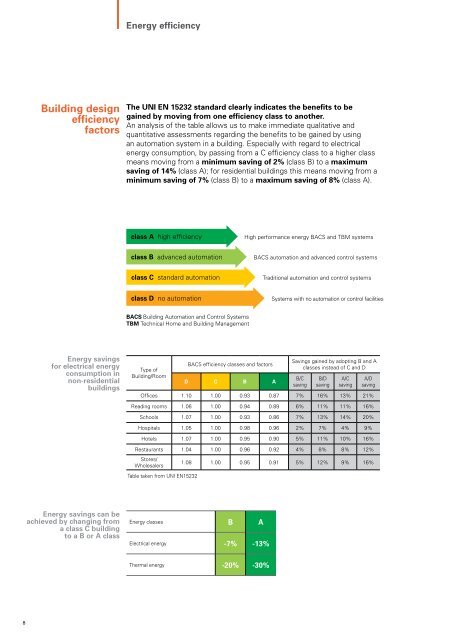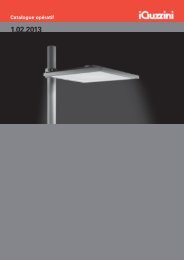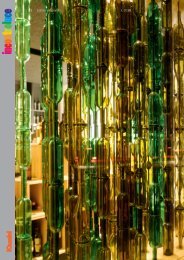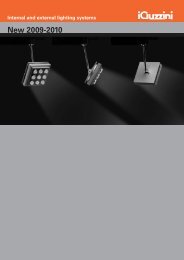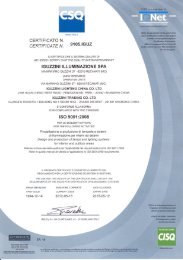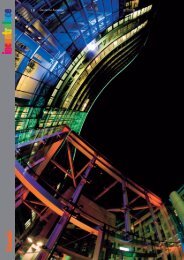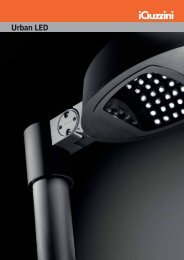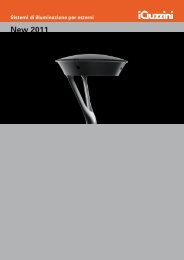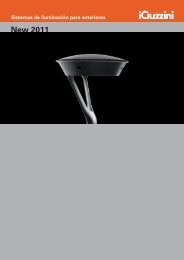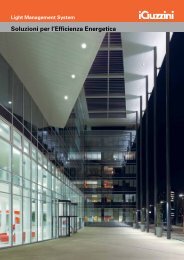Create successful ePaper yourself
Turn your PDF publications into a flip-book with our unique Google optimized e-Paper software.
8<br />
Building design<br />
efficiency<br />
factors<br />
Energy savings<br />
for electrical energy<br />
consumption in<br />
non-residential<br />
buildings<br />
Energy savings can be<br />
achieved by changing from<br />
a class C building<br />
to a B or A class<br />
Energy efficiency<br />
The UNI EN 15232 standard clearly indicates the benefits to be<br />
gained by moving from one efficiency class to another.<br />
An analysis of the table allows us to make immediate qualitative and<br />
quantitative assessments regarding the benefits to be gained by using<br />
an automation system in a building. Especially with regard to electrical<br />
energy consumption, by passing from a C efficiency class to a higher class<br />
means moving from a minimum saving of 2% (class B) to a maximum<br />
saving of 14% (class A); for residential buildings this means moving from a<br />
minimum saving of 7% (class B) to a maximum saving of 8% (class A).<br />
class A high efficiency<br />
class B advanced automation<br />
class C standard automation<br />
class D no automation<br />
BACS Building Automation and Control Systems<br />
TBM Technical Home and Building Management<br />
Type of<br />
Building/Room<br />
BACS efficiency classes and factors<br />
D C B A<br />
Savings gained by adopting B and A<br />
classes instead of C and D<br />
B/C<br />
saving<br />
B/D<br />
saving<br />
A/C<br />
saving<br />
A/D<br />
saving<br />
Offices 1.10 1.00 0.93 0.87 7% 16% 13% 21%<br />
Reading rooms 1.06 1.00 0.94 0.89 6% 11% 11% 16%<br />
Schools 1.07 1.00 0.93 0.86 7% 13% 14% 20%<br />
Hospitals 1.05 1.00 0.98 0.96 2% 7% 4% 9%<br />
Hotels 1.07 1.00 0.95 0.90 5% 11% 10% 16%<br />
Restaurants 1.04 1.00 0.96 0.92 4% 8% 8% 12%<br />
Stores/<br />
Wholesalers<br />
Table taken from UNI EN15232<br />
1.08 1.00 0.95 0.91 5% 12% 9% 16%<br />
Energy classes B A<br />
Electrical energy -7% -13%<br />
Thermal energy -20% -30%<br />
High performance energy BACS and TBM systems<br />
BACS automation and advanced control systems<br />
Traditional automation and control systems<br />
Systems with no automation or control facilities


